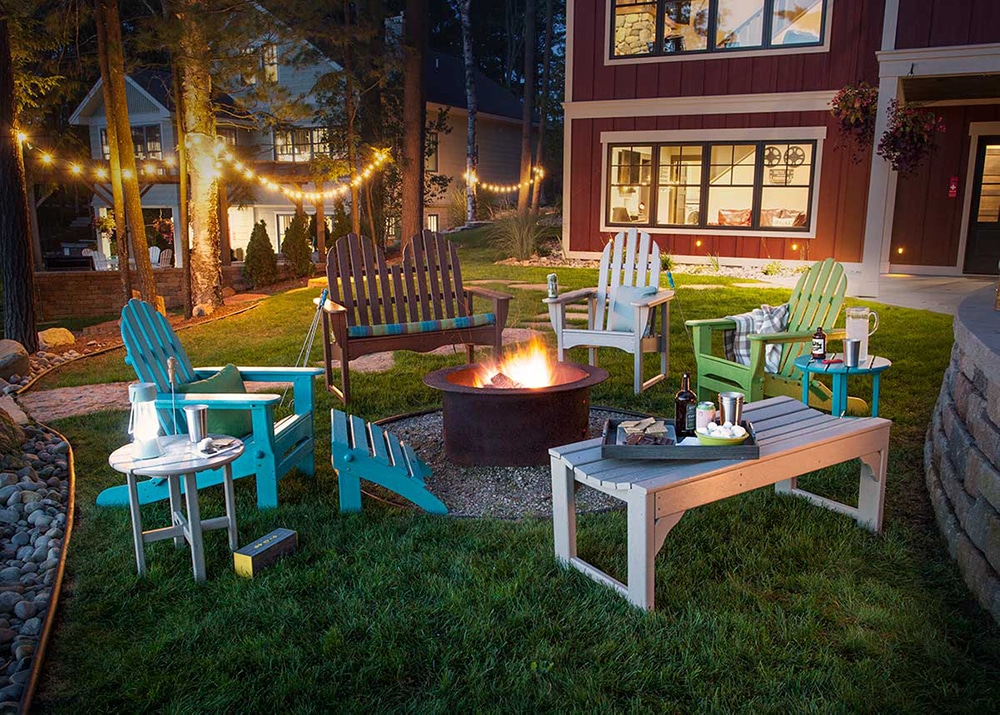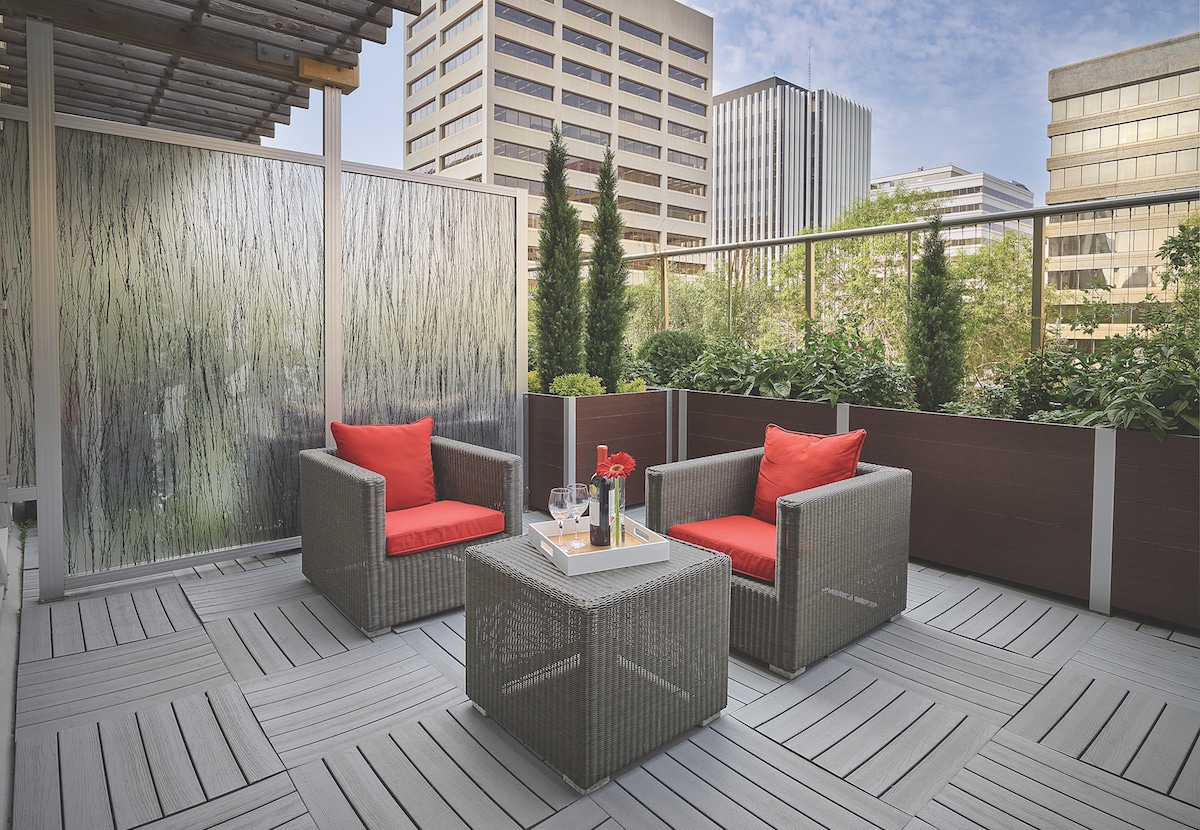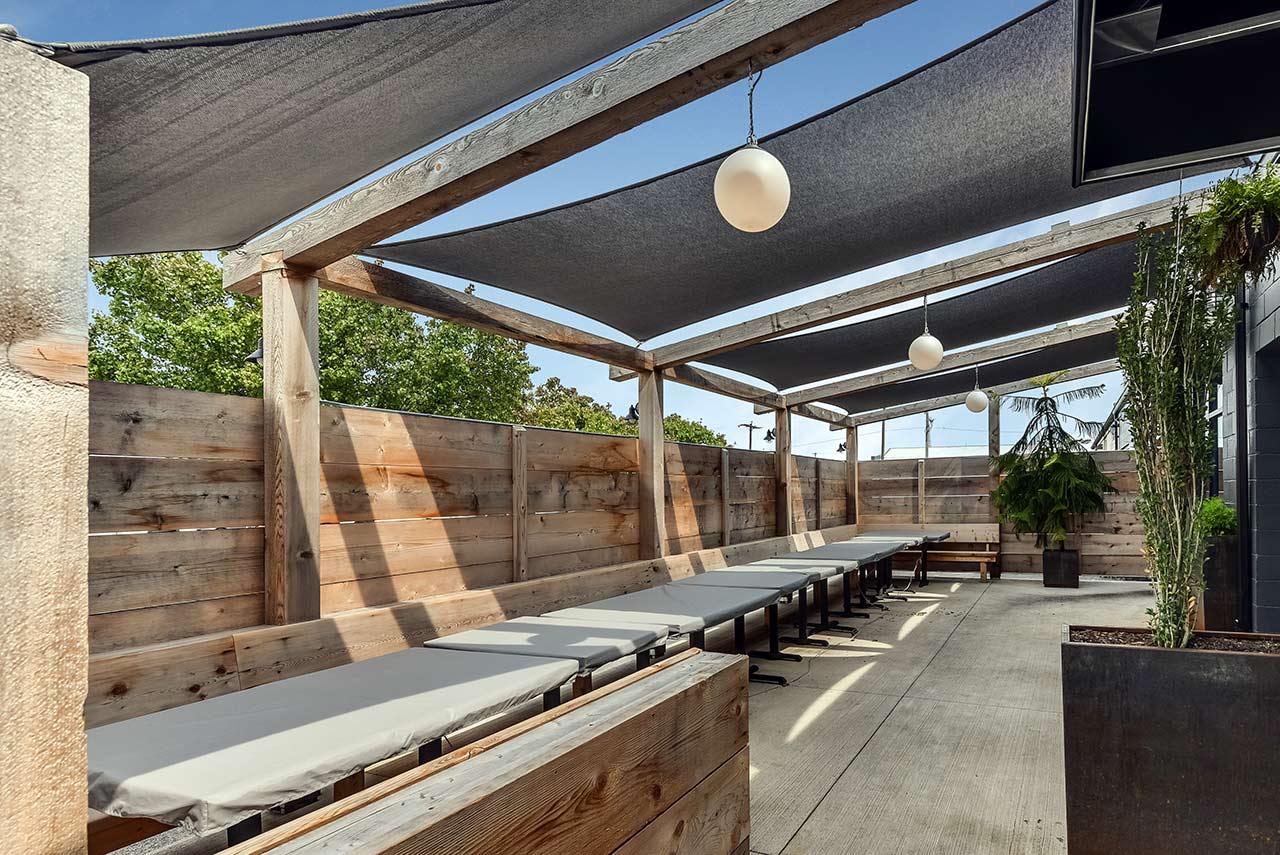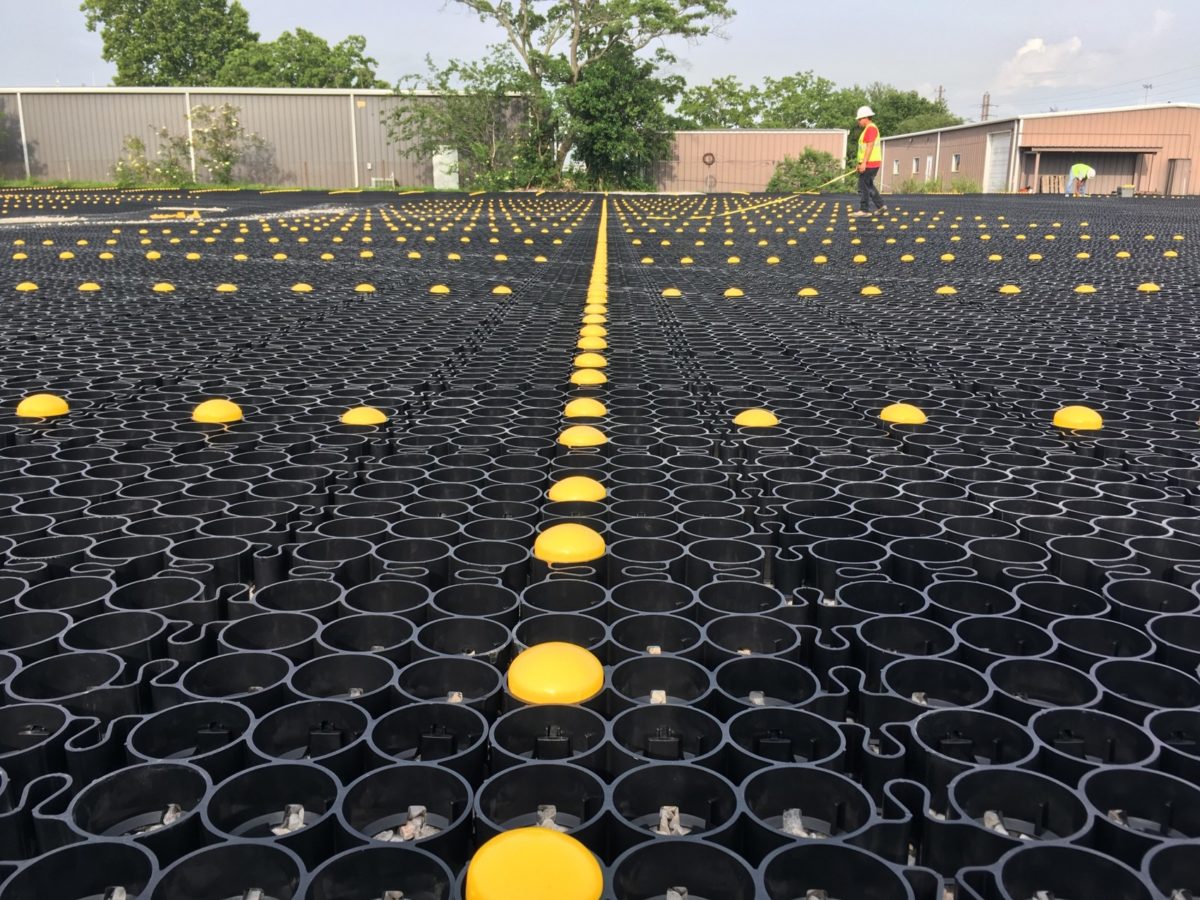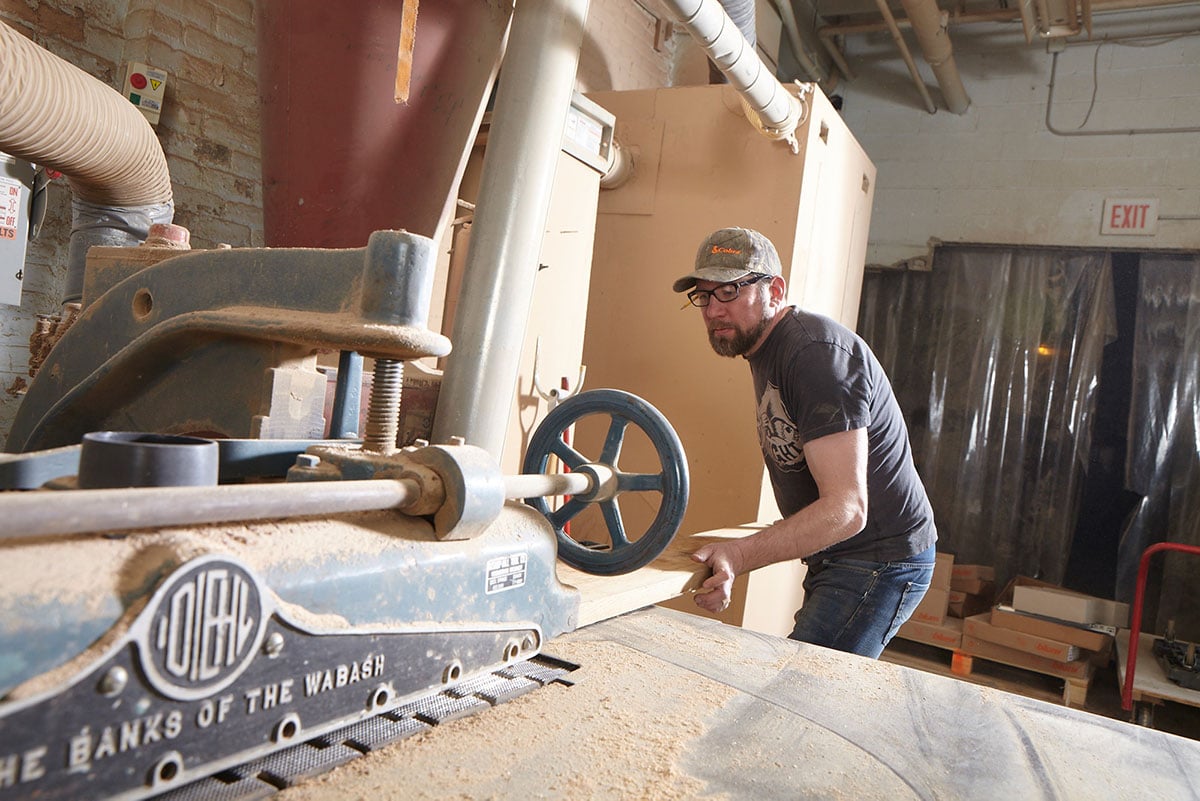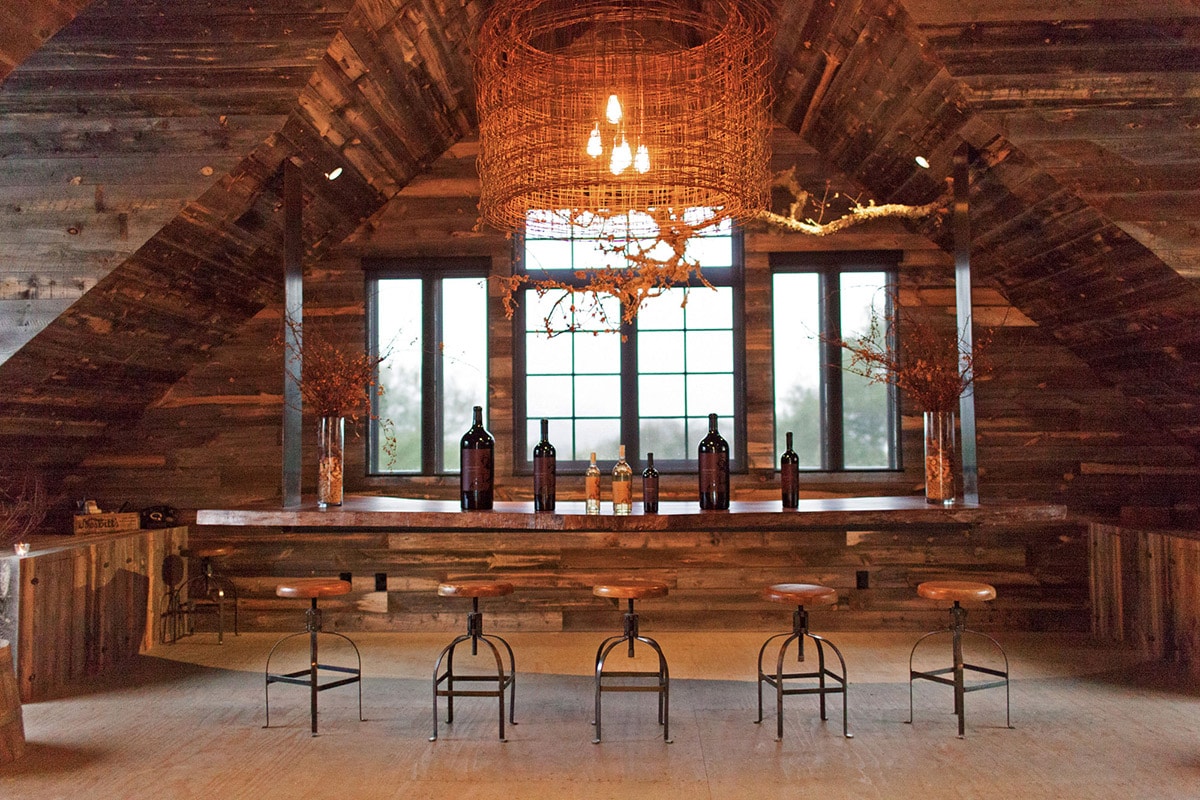Living Plastic Free
It’s harder than you might imagine to break away from clamshells and baggies.
Danielle Epifani holds a jar filled with all the plastic trash she has produced in a month.
PHOTO BY PAT MAZZERA
It’s harder than you might imagine to break away from clamshells and baggies. By Angela Hill
So there you are, in the grocery store, about to put a plastic zip bag of red grapes into a larger, flimsier plastic produce bag because the zipper on the zip bag doesn’t hold and you don’t want grapes to go cascading all over the floorboards of your car.
Reasonable enough, right? Suddenly, images of those unnecessary bags slurped up by an unsuspecting pelican go dancing through your head, and you stop, take a step back, think it over and go home — grapeless.
As more and more info emerges on what excess plastic packaging and single-use items are doing to our planet, movements are growing — locally and globally — encouraging plastic-free living.
But is it possible? Can we find products that aren’t encased in layers of thin film or clamshell? Do we have to give up our grapes?
Yes and no. “It’s not easy,” says Shilpi Chhotray of the global Break Free From Plastic movement (BreakFreeFromPlastic.org) who strives to walk the talk in her own Oakland home. “You have to be dedicated, and it can seem overwhelming at first. It takes an enormous amount of time and energy to do it right, but it can be done.”
Chhotray and other Bay Area folks are indeed doing it — living as close to plastic-free and zero-waste as humans in today’s world can get. They’re extreme, but not crazy — just crazy about saving the Earth.
Danielle Epifani of Berkeley makes her own toothpaste and even her own mascara. “I haven’t perfected the mascara formula yet,” she said, laughing. “And I tried making my own cat food and it was way too much trouble. That’s pretty much where I drew the line.
“But overall there are some really easy things that I do,” she said. “I just wash my hair now with water. My hair and my skin have totally adjusted. No products at all. I use a bamboo toothbrush. For toothpaste, coconut oil and baking soda. Some people add essential oils for flavor. I try and get tampons in a carboard applicator instead of a plastic.”
Epifani has worked on environmental issues in the past, but she recently became aware of the enormity of the problem. “It’s not just one whale choking or one seabird but entire colonies of birds stuffed with plastic,” she said. “I had already been hating plastic but never really made the connection as far as my plastic use. It seemed so far away. Why didn’t I understand that that plastic cap inside that bird could be the one I threw in the trash last month?”
Inspired in 2015 by the annual Plastic-Free July challenge (PlasticFreeJuly.org), she started auditing her trash and said that was the game changer, seeing just how much plastic waste she and her housemates generated. She also started following the plan in author Beth Terry’s book, Plastic-Free: How I Kicked the Plastic Habit and How You Can Too. Epifani later started a Facebook group with tips and news on living plastic-free and now focuses her efforts on awareness and legislation.
“Start with yourself,” she said. “It’s too easy to say the problem is too big and throw up your hands. I pretty much did one change a month. But it opened my eyes to see other opportunities. You start to train your eye for products that are plastic-free.
“It’s important to see the forest through the trees,” she said. “A lot of people will put attention on getting a reusable straw. But do you really need to use a straw at all? If you have a plastic electric toothbrush, you don’t need to ditch it for bamboo; just keep using that as long as you can.”
Nancy Hu of Lafayette saves teeth by day and tries to save the environment the rest of the time. A dentist working for the Veterans Administration on Mare Island and a mom of two young boys, Hu is passionate about zero-waste climate change, serving as the administrator for Lafayette’s Buy Nothing group.
“The turning point for me was after the 2016 election where I felt I had to do something to make a big impact by not making a big impact on the environment,” she said.
In her Buy Nothing group, the idea is to be fun and creative, to connect and share with your neighbors. “It encourages people to meet face-to-face, posting items, giving away for free, trading. Like I’ll post that I’m craving a curry soup, and someone will say, ‘I’ll leave a carrot and potato for you!’ It’s a hyper local gifting economy, sharing resources, which means less waste.”
One thing she promotes through the group is to put together a zero-waste “party pack” with two-dozen reusable place settings of dishes, metal flatware, and cloth napkins to take to birthday parties, preschool parties, work parties. “We have a lot of potlucks at work, and work parties always have tons of plastic forks and paper plates. I’m blessed to have a dishwasher at home, so I really don’t mind bringing all the dishes home after work to wash.”
Hu also encourages the use of TerraCycle, a U.S. company that partners with corporations like Colgate or Brita to accept items back for recycling. “Being a dentist, we see a lot of toothpaste tubes and toothbrushes that people throw away because there’s no way to recycle it curbside. So I collect these items then mail them back. You get a shipping label from TerraCycle, you can earn points that translate into dollar amounts that can go to a charity of choice.”
In her own home, she has some basic tricks that have become second nature, including using wood-handled sink brushes and bringing her own containers to the store, which definitely takes planning. “It took a while to figure out where to buy things without packaging,” she said. “Like, if I’m in a hurry, I can buy pine nuts at Trader Joe’s in a plastic container because it’s closer, but if I have more time, I can go to Sprouts with my own jar and get it there in the bulk aisle.”
She admitted her family is not completely plastic-free. “With oral care, I know people do things like baking soda and coconut oil. I’ve thought about doing that, but because there haven’t been any formal studies on it, I shy away from it. You still need fluoride toothpaste, and I’m not sure how to get that in zero-waste.
“Plus, you can’t spit coconut oil down your sink because it clogs the drain, so you have to spit into a compost thing, which kinda grosses me out.”
Chhotray, in her role in communications for Break Free From Plastic, has learned so much about the issue, especially as it relates to the big oil companies in the United States, she is particularly sensitive to its use.
“With all that I know about it, I just can’t be around plastic — all I see is oil,” she said. “Recycling plastics is just a fallacy. Only 9 percent of our plastic waste gets recycled, and so much is ending up swimming in our oceans or in other countries. Try to find things in glass containers. Glass is amazing and can be recycled over and over again without loss of quality.”
Instead of Saran Wrap, she uses beeswax paper material. For cleansers, she’s found great recipes online with vinegar and lemon juice. She also suggests supporting restaurants and stores that use sustainable takeºout containers.
“Kitchen and household items can be drastically reduced by shopping in bulk, bringing jars and bags from home. But the thing I can’t stand is when you go to a grocery store that offers bulk but they have single-use bags.
“Even at the farmers market there’s a disconnect,” she said. “You still see these thin film bags to put your vegetables in. San Francisco and Berkeley have banned them, but the farmers market in Oakland is right by beautiful Lake Merritt, and you literally see these bags flying through the air and ending up in the water.”
Part of the problem with trying to go plastic-free, however, is that it’s not just less convenient, but often more expensive, which creates issues of inequality, Chhotray said.
“We’re finding that zero-waste has become this trend in coastal elite cities, and what we don’t want it to become is this narrative of anti-poor,” she said. “Not everyone can afford a $15 shampoo bar or even get to a vendor who sells things of that nature. There are all these issues of equity as to how this narrative plays out.”
The general idea is you don’t have to go crazy on plastic-free; just try a little at a time and look at the bigger picture.
“We have to be realistic in the world we’re living in,” Chhotray said. “To be quite honest, no individual action is going to change the world at this point. That said, individual action, reducing waste, supporting brands on zero-waste products and packaging is very important for raising awareness and getting change at the manufacturing and legislative end. It’s beyond bringing your own bag and water bottle.”
For Epifani, going zero-waste and plastic-free has freed her from the burdensome feeling that “We’re doomed,” she said. “Instead, I feel empowered to find solutions. No one forces my hand to reach out for that bag of Doritos that can’t be recycled. I do that. So if I step back, I take my power back over the situation, even in a small way.”
This article originally appeared in our sister publication, The East Bay Monthly.

 ... when it comes to plastics, that is. It’s possible to make plastic from renewable materials, such as sugarcane, like British men’s skincare brand Bulldog Skincare does. “For every 100 tonnes of sugarcane plastic used in Bulldog tubes, 309 tonnes of CO2 is taken out of the environment,” says brand founder Simon Duffey.
... when it comes to plastics, that is. It’s possible to make plastic from renewable materials, such as sugarcane, like British men’s skincare brand Bulldog Skincare does. “For every 100 tonnes of sugarcane plastic used in Bulldog tubes, 309 tonnes of CO2 is taken out of the environment,” says brand founder Simon Duffey.
 “This initiative is a reflection of the company’s unwavering values, and represents an urgent call to action to help protect our vast oceans and marine life,” says Murphy.
Both brands also package their products in square, not round bottles, which uses less plastic and packing materials, and takes up less shipping space so the overall carbon footprint is reduced.
“This initiative is a reflection of the company’s unwavering values, and represents an urgent call to action to help protect our vast oceans and marine life,” says Murphy.
Both brands also package their products in square, not round bottles, which uses less plastic and packing materials, and takes up less shipping space so the overall carbon footprint is reduced.
 Buy pretty refillable bottles (
Buy pretty refillable bottles ( Brands like LUSH are cutting the waste by reducing overall packaging, or in some cases, cutting it completely. Around 40 percent of its range is packaging-free (the brand calls it ‘naked’ (all packaging is made from materials that are recycled, recyclable, reusable or compostable) and each new range over the past year has been offered in a naked version. LUSH even has zero-waste Naked shops in Milan, Berlin and Manchester, and is touring a bath-bomb pop-up in North America soon. Another great low-waste brand is Calgary’s
Brands like LUSH are cutting the waste by reducing overall packaging, or in some cases, cutting it completely. Around 40 percent of its range is packaging-free (the brand calls it ‘naked’ (all packaging is made from materials that are recycled, recyclable, reusable or compostable) and each new range over the past year has been offered in a naked version. LUSH even has zero-waste Naked shops in Milan, Berlin and Manchester, and is touring a bath-bomb pop-up in North America soon. Another great low-waste brand is Calgary’s  Now that you’ve considered the more obvious beauty products, it’s time to examine things a little harder. Simon Duffey says that in 1990 (the most recent data available), the
Now that you’ve considered the more obvious beauty products, it’s time to examine things a little harder. Simon Duffey says that in 1990 (the most recent data available), the 
 These days, virtually every brand is accessible on social media and via their websites, so and ask them about their sustainability and recycling efforts. The good ones are responsive, transparent, and will explain their policies to you. After that, decide which brands align with your own values—whatever they are—and spend your money there.
These days, virtually every brand is accessible on social media and via their websites, so and ask them about their sustainability and recycling efforts. The good ones are responsive, transparent, and will explain their policies to you. After that, decide which brands align with your own values—whatever they are—and spend your money there.


